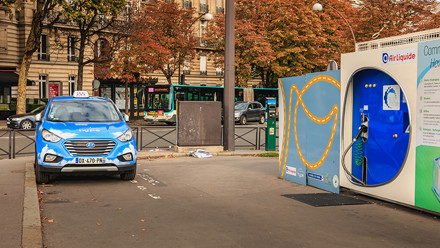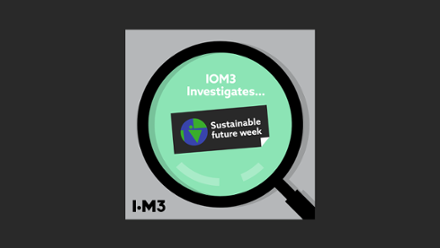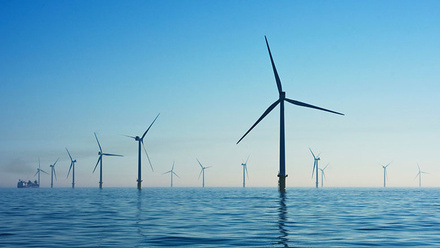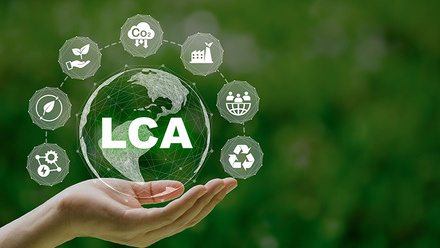Get talking – On reflection
Dr Richard M Oblath FIMMM, Chair of the IOM3 Energy Transition Group, shares his personal reflections and highlights from COP26.

I attended various COP26 meetings virtually during its two weeks – mostly hybrid virtual and in-person events, some public and some private, (mostly under the Chatham House rule).
My focus was on:
- · The overall commitments made on greenhouse gas (GHG) reductions to achieve the related temperature rise projections versus the maximum 1.5oC target.
- · Whether governments would agree on accelerating the reduction of two key GHG emission sources – coal and methane.
- · Financing of global decarbonisation.
- · Progress on implementing a global, transparent carbon pricing and trading system, as per the aspiration outlined in COP21 (Paris) Article 6.
The first week was mostly speeches by global leaders and important announcements by various groups, with the second week spent on the hard work of trying to reach a consensus on all matters, resulting in a final communique enshrined as the Glasgow Climate Pact.
China did not attend at leadership level, although a senior delegation was present, and left unchanged their goals previously announced of net-zero by 2060 and GHG peak emissions by 2030.
Importantly, India announced for the first time a target of reaching net-zero, although disappointingly only by 2070.
The second week included a surprise agreement by the USA and China to ‘enhance ambition’ on climate change, issuing a joint statement in which both countries pledged to do more to cut emissions this decade and in which China also committed, for the first time, to address emissions from methane. In addition, China also agreed to phase down coal consumption during its 15th Five Year Plan, which starts in 2026.
Coal
Targets for ending the mining of coal and its use in power generation has advanced somewhat during COP26.
The G20 – including China and Japan – agreed to stop funding non-local coal plants, and a dozen countries – including Vietnam, Chile and South Korea – agreed to accelerate the phase-out of coal, but disappointingly this did not include the USA and China.
Indonesia asked for more funding to speed up ending the use of coal, and, absurdly, Poland claimed they were a developing country and thus should be allowed to delay the phase out from 2030 to 2040.
An interesting development was an agreement by the UK and USA, plus some other countries, to provide US$8.5bln to speed up South Africa’s energy transition, including eliminating coal mining and its use in power generation within 10 years.
Japan is planning to invest US$100mln to transform coal-fired plants into facilities that burn ammonia and hydrogen, in Japan, as well as elsewhere in Asia, through a framework called the Asia Energy Transition Initiative.
In addition, the Asian Development Bank announced a plan to help Indonesia and the Philippines retire 50% of their coal fleet over the next 10 to 15 years. These multilateral, rather than global, agreements are a new pathway and may rally the aspiration of many to move away more rapidly from coal powered electricity.
Despite a last minute change driven by India, with the full support of the US and China, to water down the language in the Pact from ‘phasing out’ to ‘phasing down’ coal power (note this is the same language used in the bilateral US/China agreement), this is still significant as it is the first mention of coal in a COP text. Although it falls short of the goal of ‘consigning coal to history’, it went further than the G20 discussions just before COP26 and sends a very clear signal of intent.
There is frustration (British understatement) by many with the continuing slow elimination of coal as a feedstock for electrical generation in countries who have over 50% of their power from this source – China, India, South Africa, Indonesia, Vietnam, Australia, Poland, Kazakhstan and Serbia. One should comprehend the challenges for these countries due to the need to find alternative employment for the many involved in coal mining and shipping (major users of rail in India), the impact of having to import energy feedstock – natural gas rather than indigenous sources – during the transition to renewables, plus the very large investments required.
Methane
The other GHG that has been the focus of much debate is methane. More than 100 countries have signed the Global Methane Pledge to cut these emissions by at least 30% by 2030 – although this is below the targeted 45% reduction.
As methane is 86 times more potent a GHG than CO2 – with a shorter life in the atmosphere – this is an important move to slow the global rise in temperatures. Disappointingly, the pledge was not signed by three major emitters – China, India and Russia. It should be noted though that the bilateral USA and China agreement made in the second week did include a pledge to work on reducing methane emissions.
While the routine venting and flaring in the energy industry is being eliminated via focused procedure and process changes, more difficult sources of methane to end are from ‘fugitive’ emissions, those from pipe, flange and equipment leakages.
The latter issue is driving investments in many new or improved technologies, such as a step-change in real time detection at very low levels of leakage, remote detection identifying the location of low-level leaks using drones and satellite imaging, advanced valve designs, artificial intelligence for process improvements, and order of magnitude improvement in sensors for methane.
Finance
While public financing is seen to be crucial to unlock much larger private sums, at the Summit there were positive signs that private money might be preparing to move on its own. Former Bank of England Governor, Mark Carney, led the formation of the Glasgow Financial Alliance for Net Zero (GFANZ), bringing together asset managers from around the world with US$130trln under management to accept the goal of zeroing-out emissions by 2050.
There was significant criticism by many countries due to the shortfall in the promises by the developed world, at COP21 in Paris, to provide US$100bln a year by 2020 to the developing world to promote the reduction of GHGs. Despite some additional commitments in the past few months, it was recognised that this level will only be reached by 2023, with work to be done at COP27 to further increase this annual amount beyond US$100bln.
A topic that came to the forefront during the Glasgow conference was adapting to the ravages of climate change already being experienced, especially in low-lying coastal regions and many island nations, plus the increasing severity of storms and heatwaves. An agreement was reached to develop significant funds – the developing world pushed for grants not loans – in the next year, targeting in the range of US$40bln, to be finalised at COP27 in Egypt.
Carbon trading
The negotiations on implementing a global and transparent carbon pricing and trading system, as per the desire outlined in the aspirational COP21 (Paris) Article 6, were finally concluded with rules agreed on international carbon trading. This brings clarity and standardisation to companies that should help reduce emissions, with some tightening still likely required to allow complete transparency.
The major objective and impact of these rules is to unify measurement and transparency of the various schemes in place in different regions and countries (such as the EU and China), plus encourage full implementation in others (USA, UK and Japan in particular).
Deforestation
Another first was the agreement by parties including Brazil, Indonesia, Canada and Russia to end and reverse deforestation by 2030. There were well over 100 countries that signed this pledge and it was included in the Glasgow Climate Pact. Some promises have been made in the past and not kept. While still not legally binding, there is hope that this focus will bring real improvements in this area. If little is achieved in the next year, it is possible that COP27 will discuss legally binding commitments.
Sense of urgency
There was a general agreement that actions, not just promises, were needed to be demonstrated and that implementation paths required continuous improvement and GHG reductions must be verifiably and transparently measured.
New rules were introduced to allow for greater scrutiny on emissions reporting, with the next round of Nationally Determined Contributions (NDCs) to be made ahead of COP27 in a year and thereafter also annually, rather than the five-year gap previously agreed at COP21.
Increasing these legally binding commitments on GHG emission reductions is targeted at laggard countries and, in parallel, increasing pressure on the financing of the investments needed, especially from commitments by the developed world to the developing world.
The bottom line
Ahead of the COP21 meeting in Paris in 2015, the world was on a path to a probable temperature rise of approaching 6oC by 2100. In the years since, actions have been taken to reduce these projections to 2.7oC coming into the COP26 meeting in Glasgow. If all the commitments made in Glasgow were implemented and achieved, this would leave the world on course for 1.8oC keeping 1.5oC in reach. The real immediate task is for each government to return home, pass legislation and deliver on the promises made.
In the case of the UK, for example, they were the first country to pass legislation, in 2019, targeting net-zero by 2050 and a world leading commitment to reduce GHG emissions 78% by 2035 versus a 1990 baseline. However, further legislation will be needed to meet the various requirements for each business segment, such as power generation, transportation, housing, commercial buildings, cement and steel production, agriculture, etc.
IOM3 will also be hosting an event on 3 March 2022 entitled ‘COP26 & beyond…the pathway to Net Zero’










